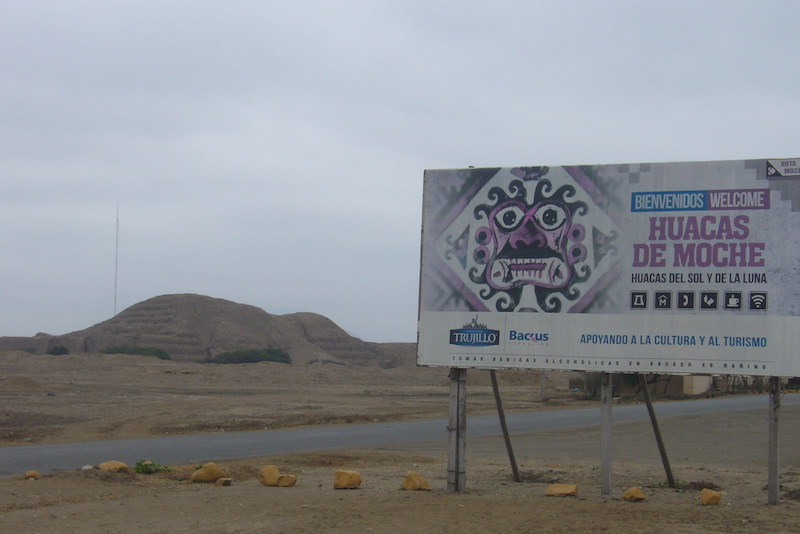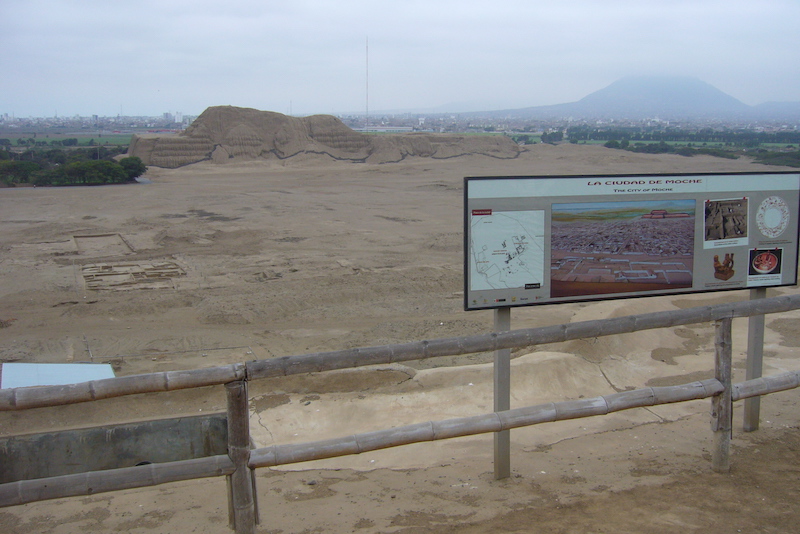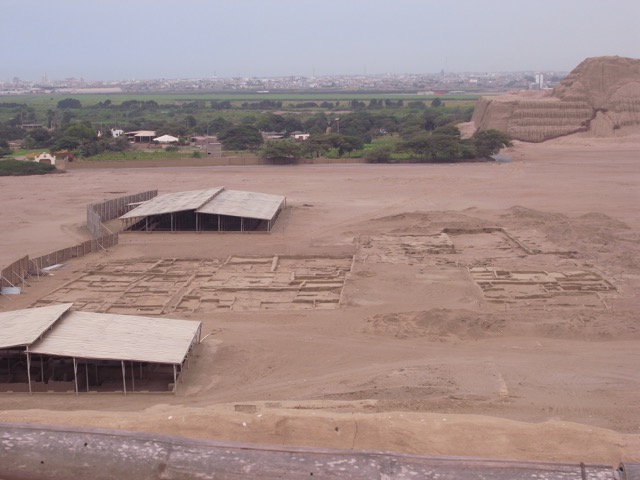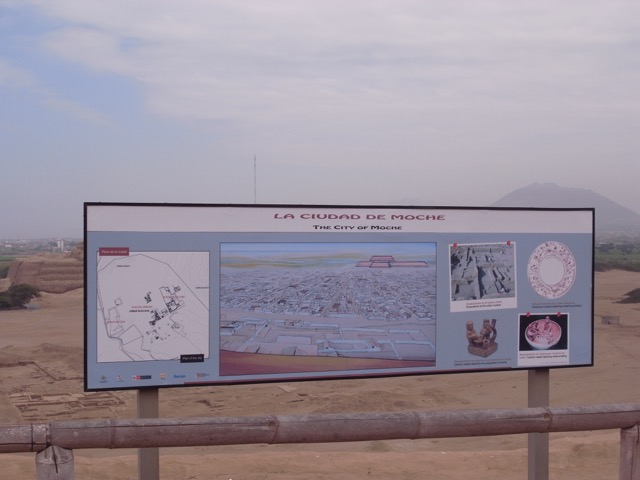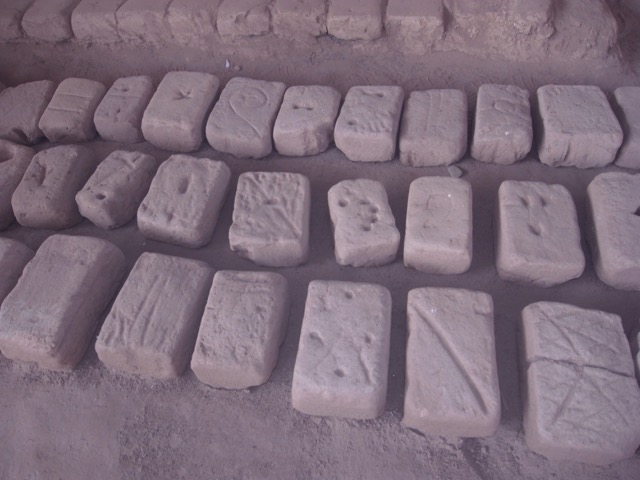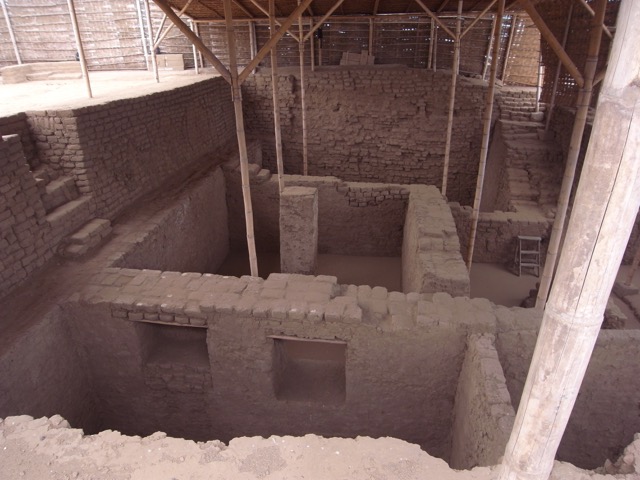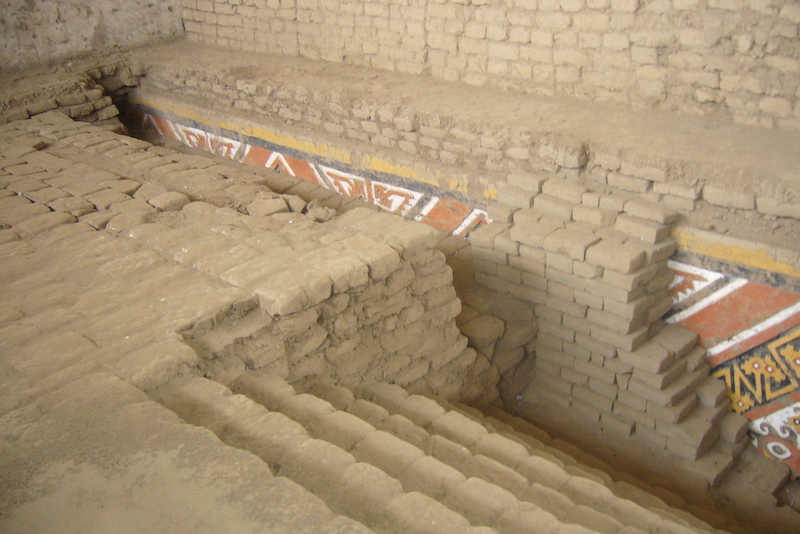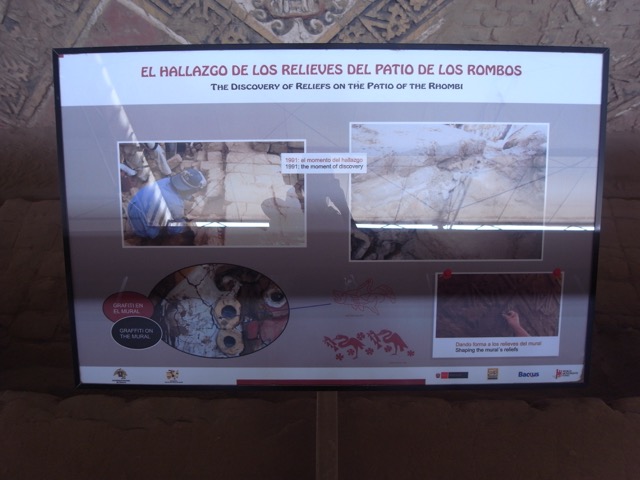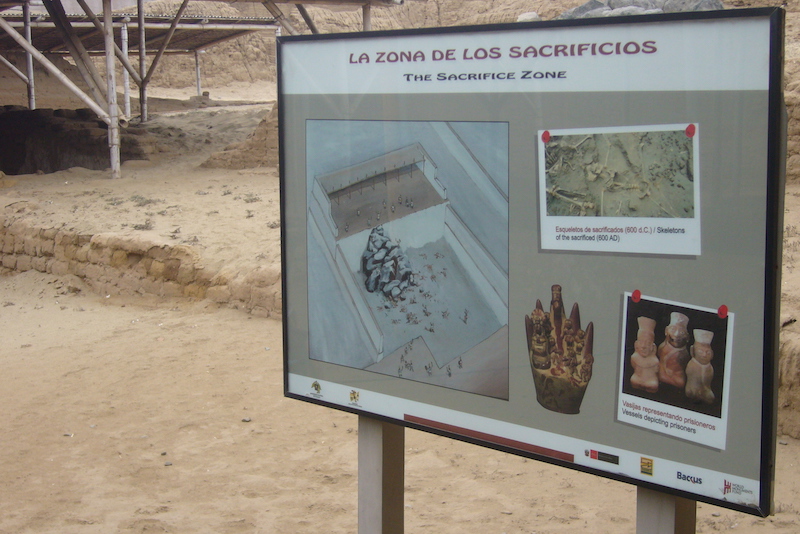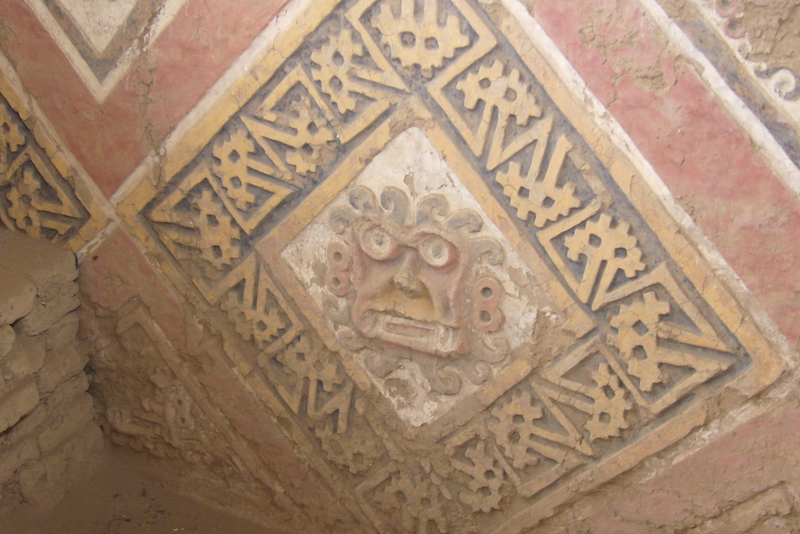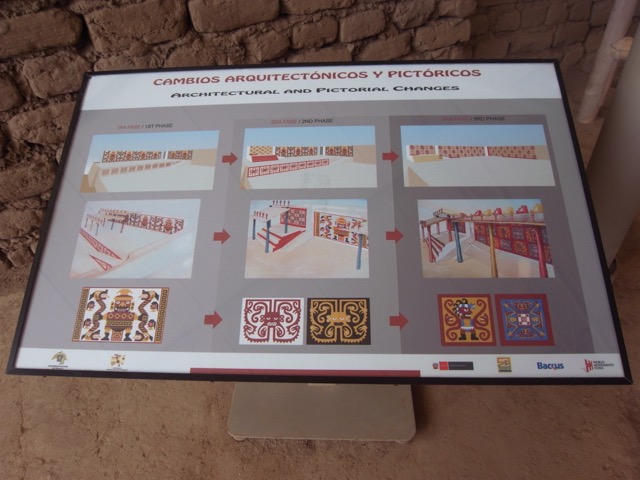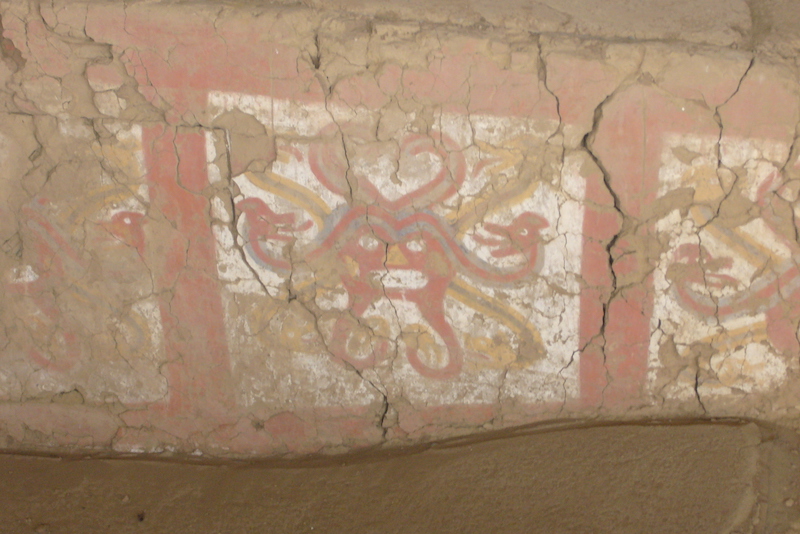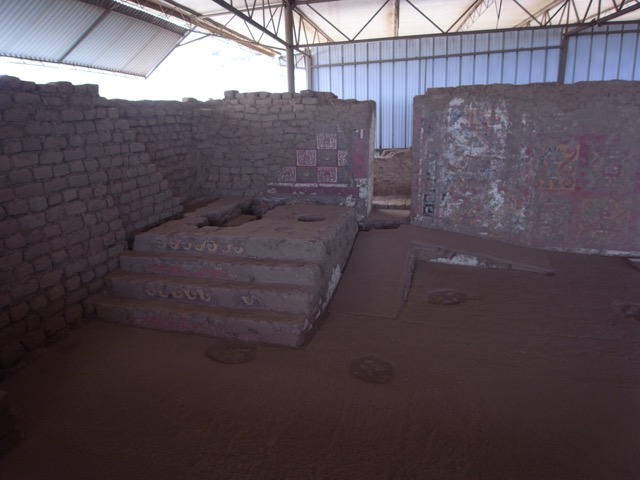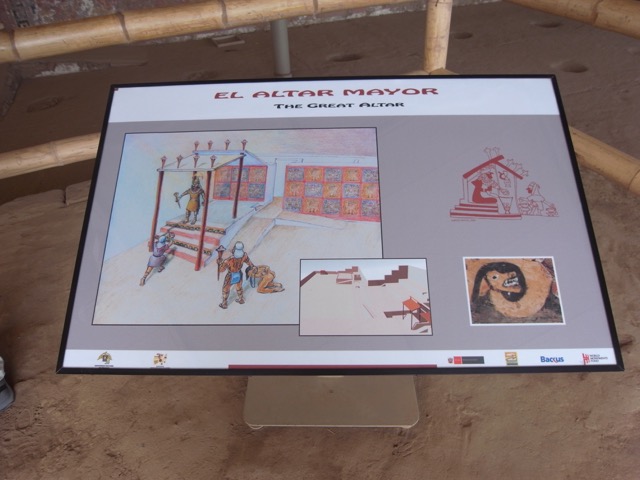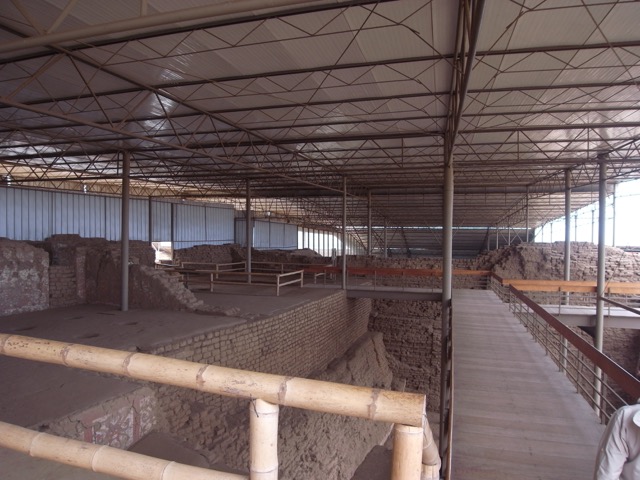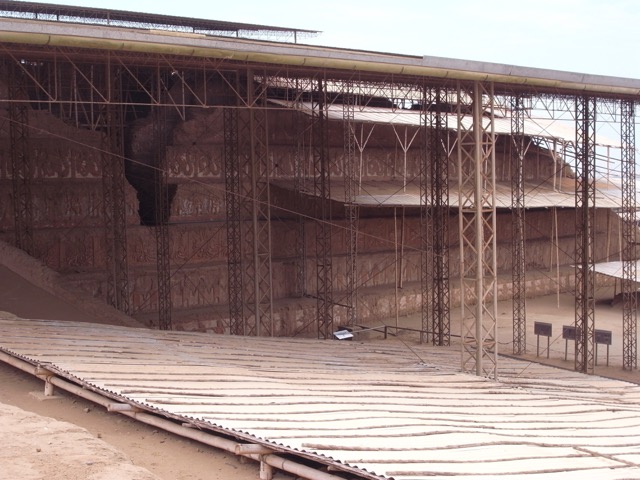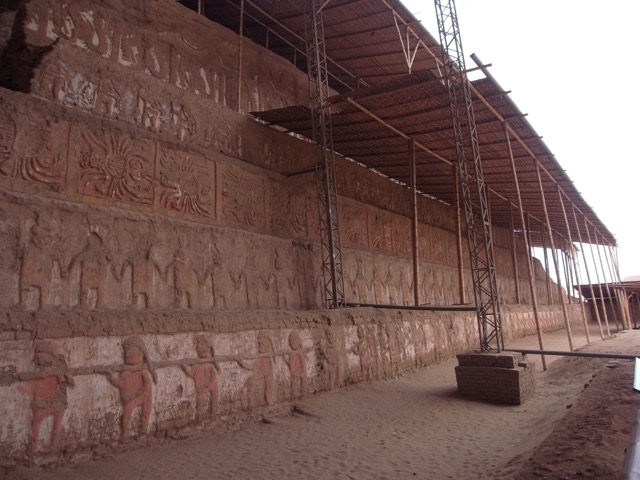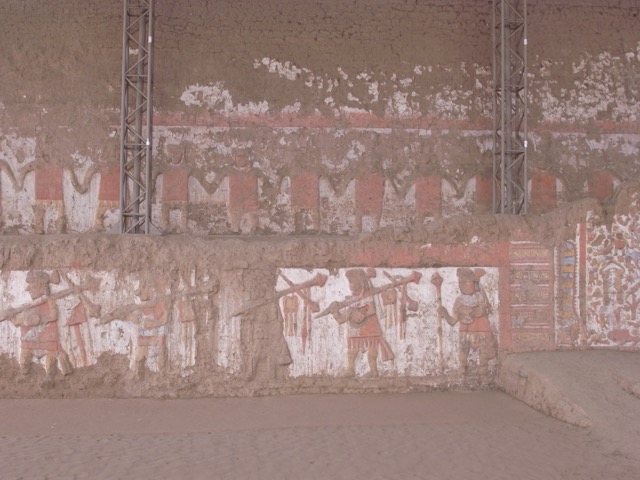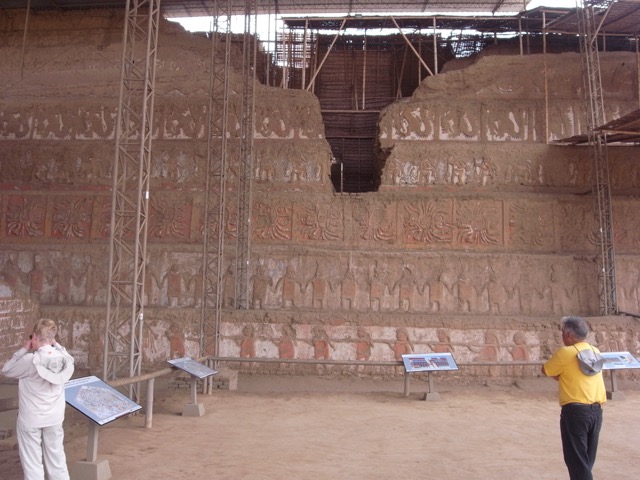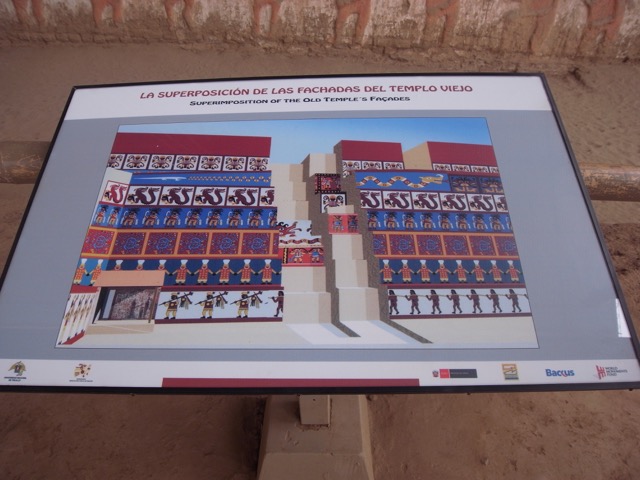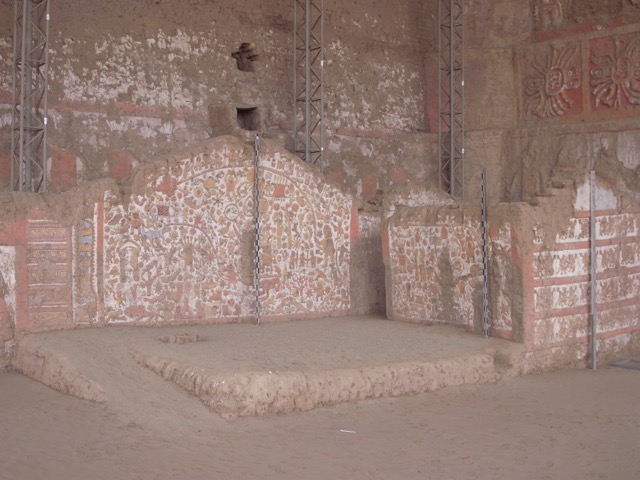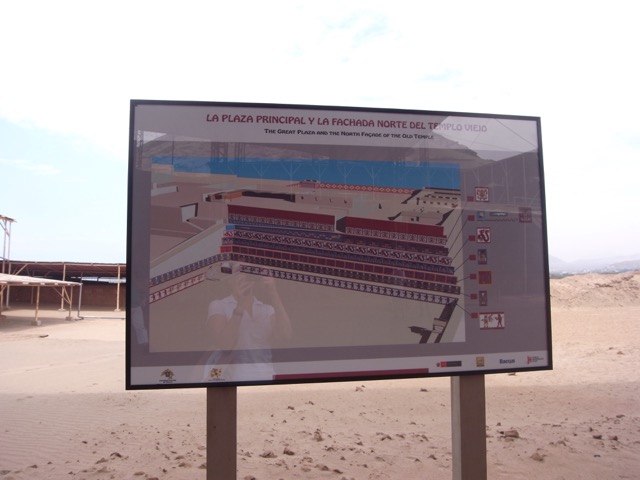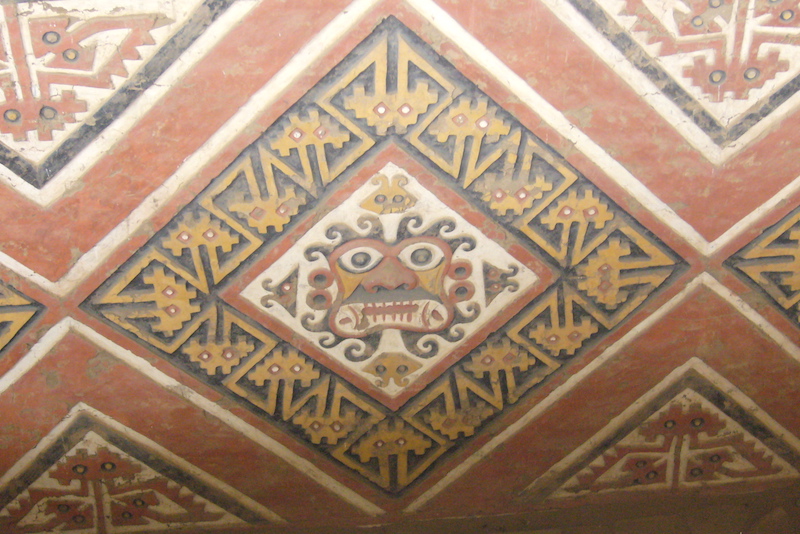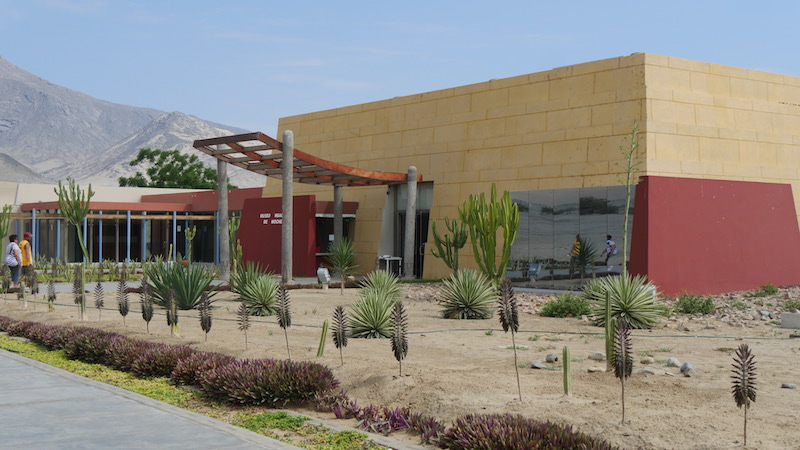The temple is really a series of superimposed structures built over six centuries. When one temple fell out of use, the Moche simply built another on top of it, burying old murals and creating new ones, and leaving behind a mosaic of altars and walls.
Huaqueros have looted the temple, and tombs recently found in the burials were those of sacrificed prisoners rather than of important nobility, but archaeologists suspect that noble tombs still lie undiscovered.
The main temple has a 75 m (245 ft) long facade consisting of seven steps, each nearly 3 m (10 feet) high and decorated with a row of larger-than-life images. Some of the images depict humans, such as parades of armed warriors and naked prisoners, but most show mythical beings such as spiders and dragons holding decapitated human heads, or Ai-apaec, the decapitator god.
Smaller temples on the site feature complicated murals of priests and animals or giant grotesque faces.
Several hundred yards away stands the badly-damaged Huaca del Sol. The largest adobe building in the world, it was constructed with an estimated 140 million bricks.
The Huacas de Moche Museum.
Between the two huacas lies a flat area containing the foundations of hundreds of rooms dedicated to a variety of industrial, religious and residential uses.
Archaeologists are currently excavating the buildings, which have been used as the model for the excellent site museum which can - and should be - visited along with the archaeological site itself.
How to Visit Huaca de la Luna:
As an undoubted Trujillo highlight, Huaca de la Luna is included in all PeruNorth itineraries that visit the city:
A visit can also be arranged from Chicama, as a break from surfing, or on the way to or from Trujillo airport:
What our clients say about the Huaca de la Luna:
“Favourite animal encounter: Burrowing owls at the Moche pyramids.
They were held in special reverence because they were the only totem that could communicate both with the gods (flying up) and with the dead, burrowing into the earth. ”
“My favorite cultural destination was Huaca de la Luna.
Actually seeing the Moche’s ancient concept of one generation building a beautifully designed floor and then having the next generation cover it with bricks to make another beautifully designed floor sort of “in action” was quite amazing.
The detail of the wall work throughout the structure was breathtaking.”
“We enjoyed ... Huaca de la Luna - so much more excavation has been done since our first visit and the guided tour was very informative”


